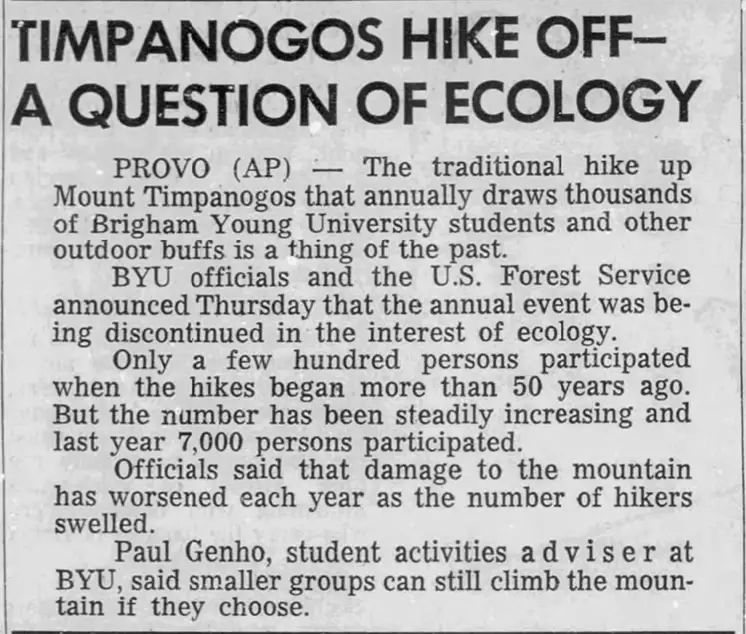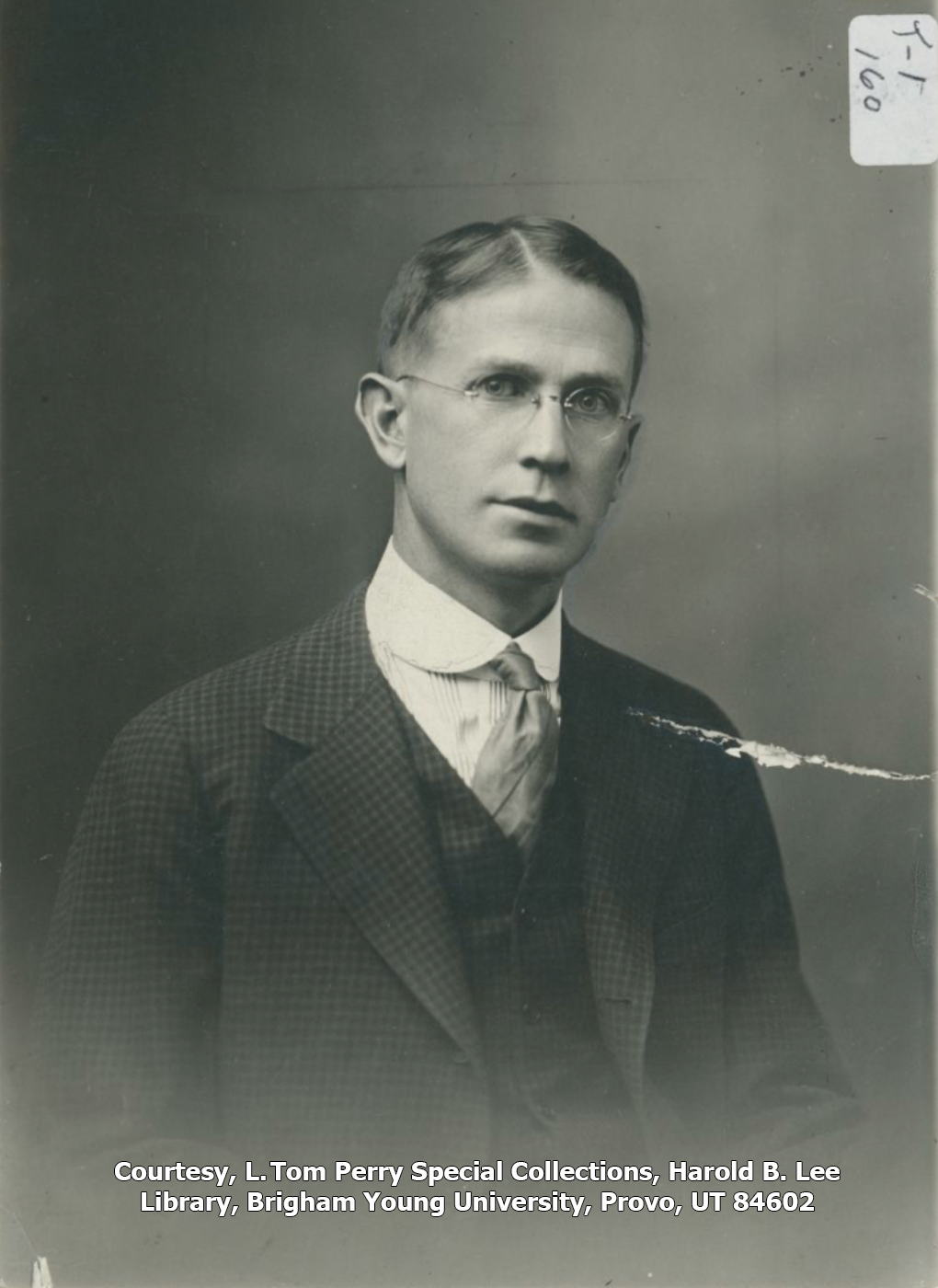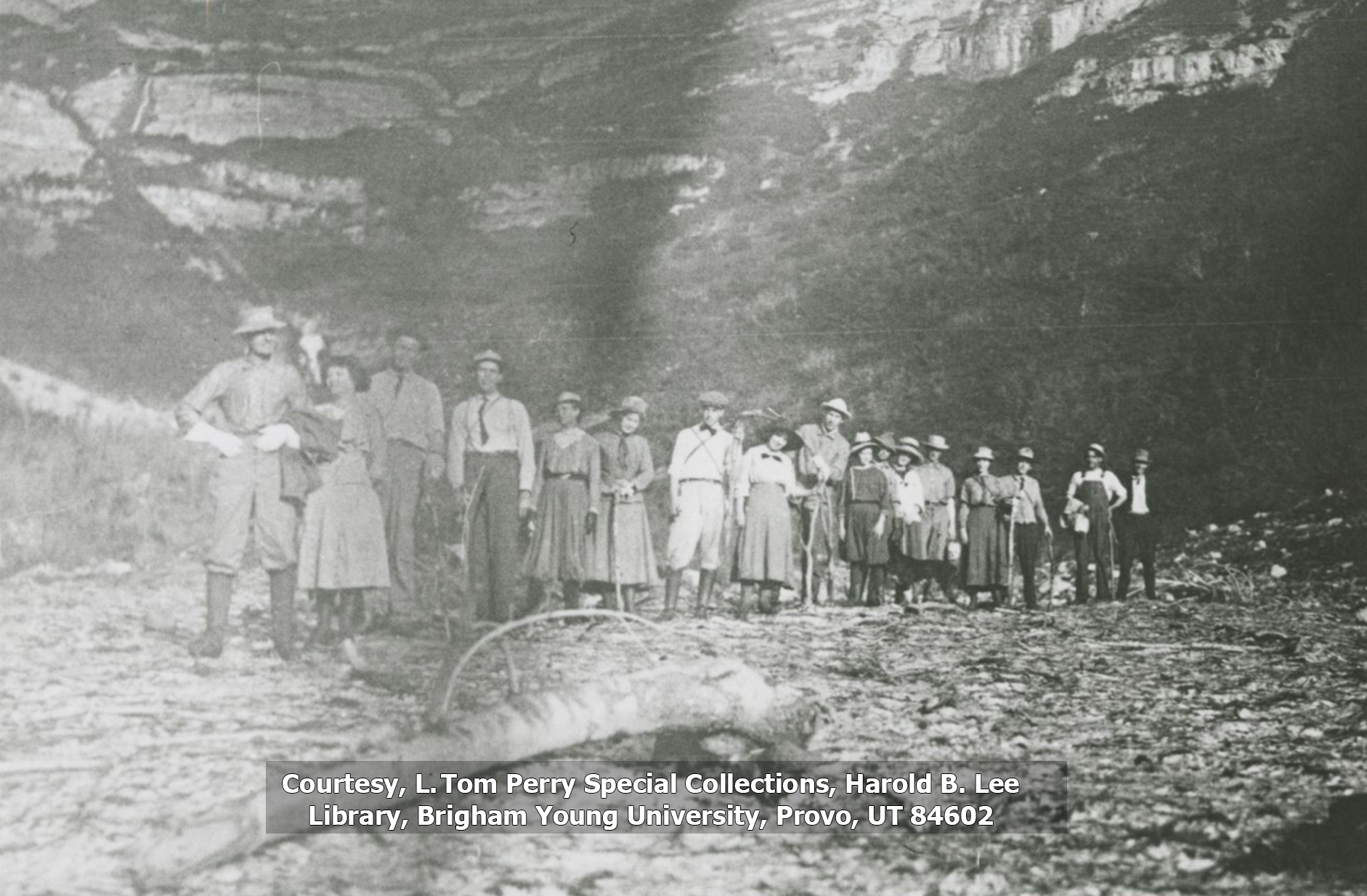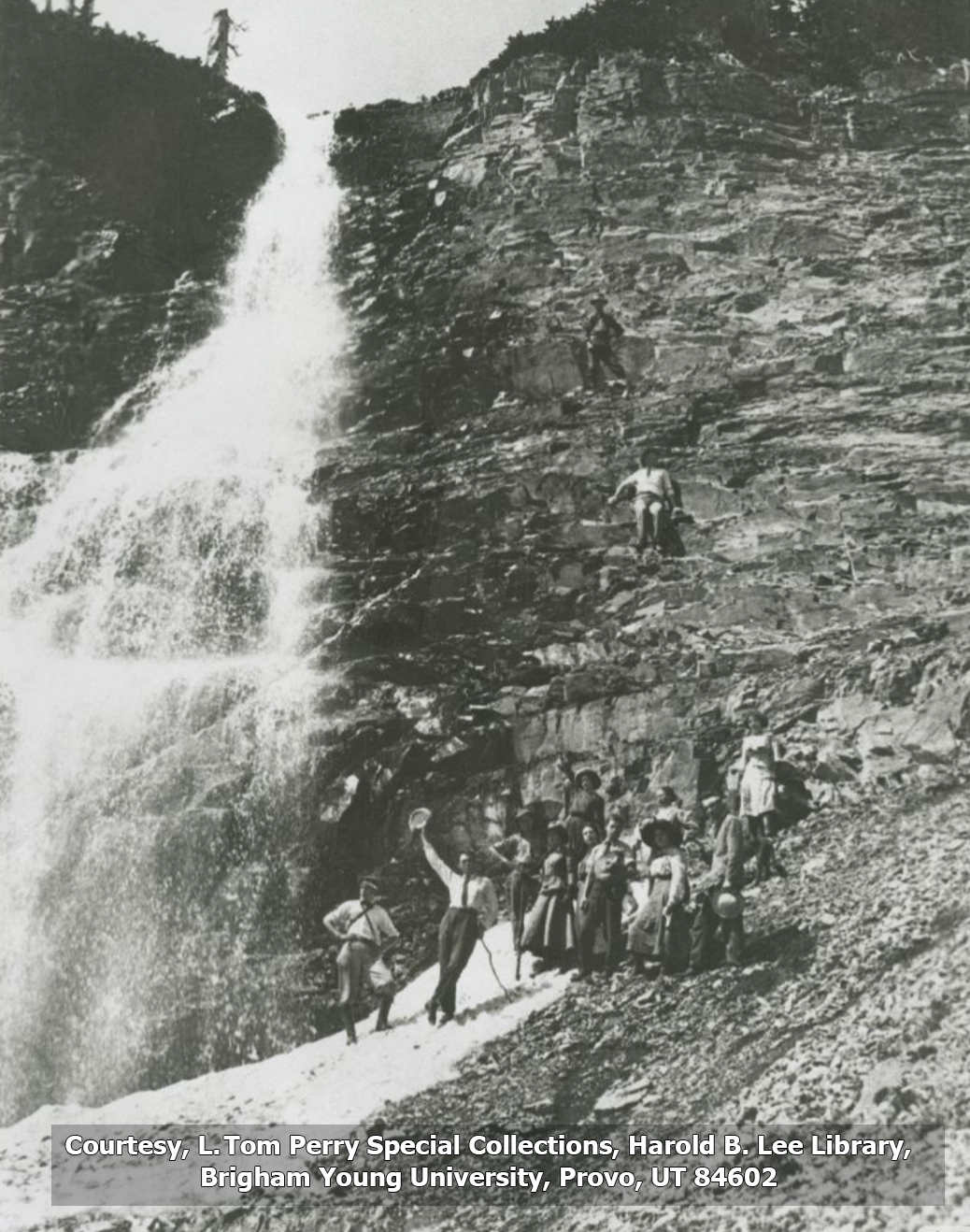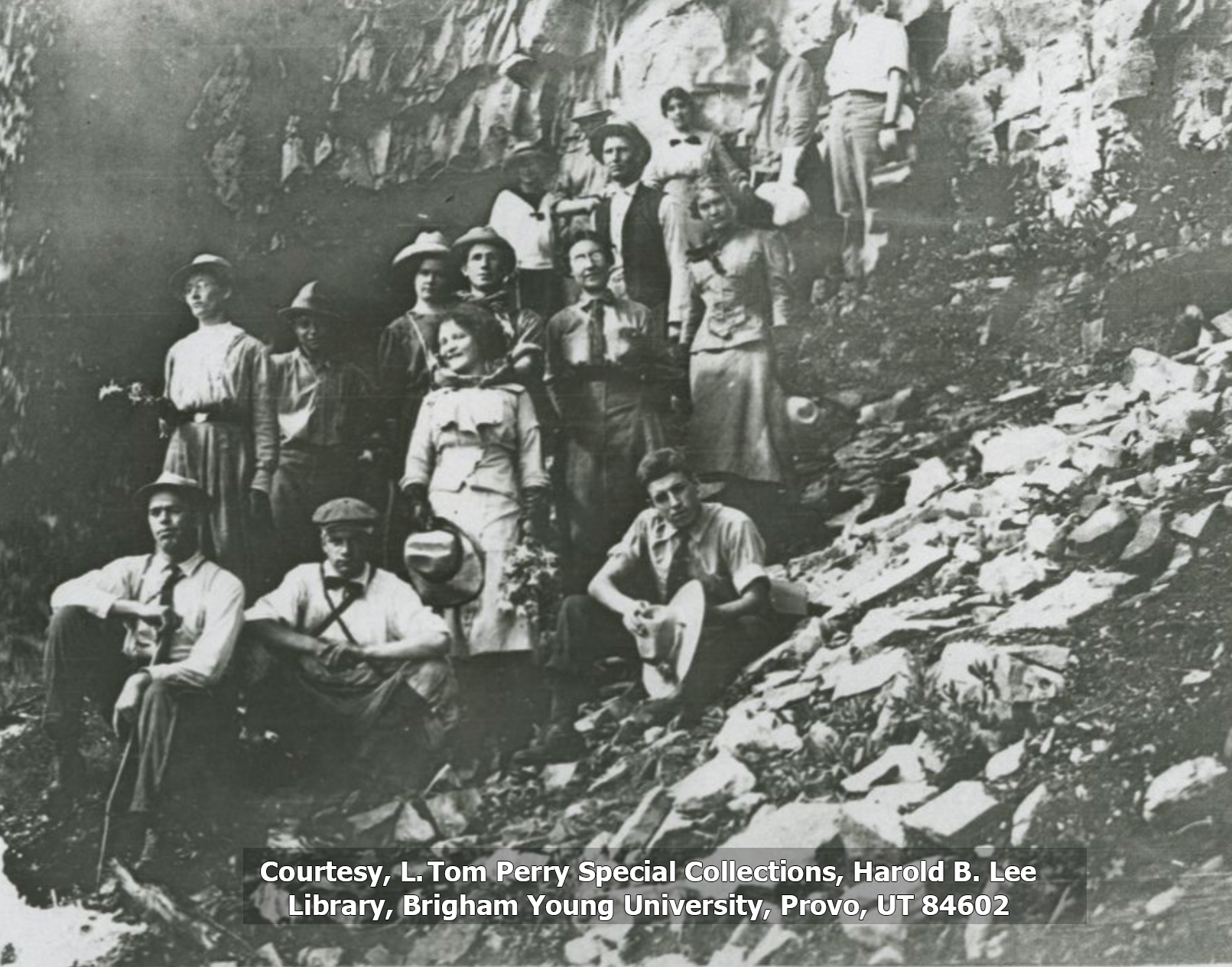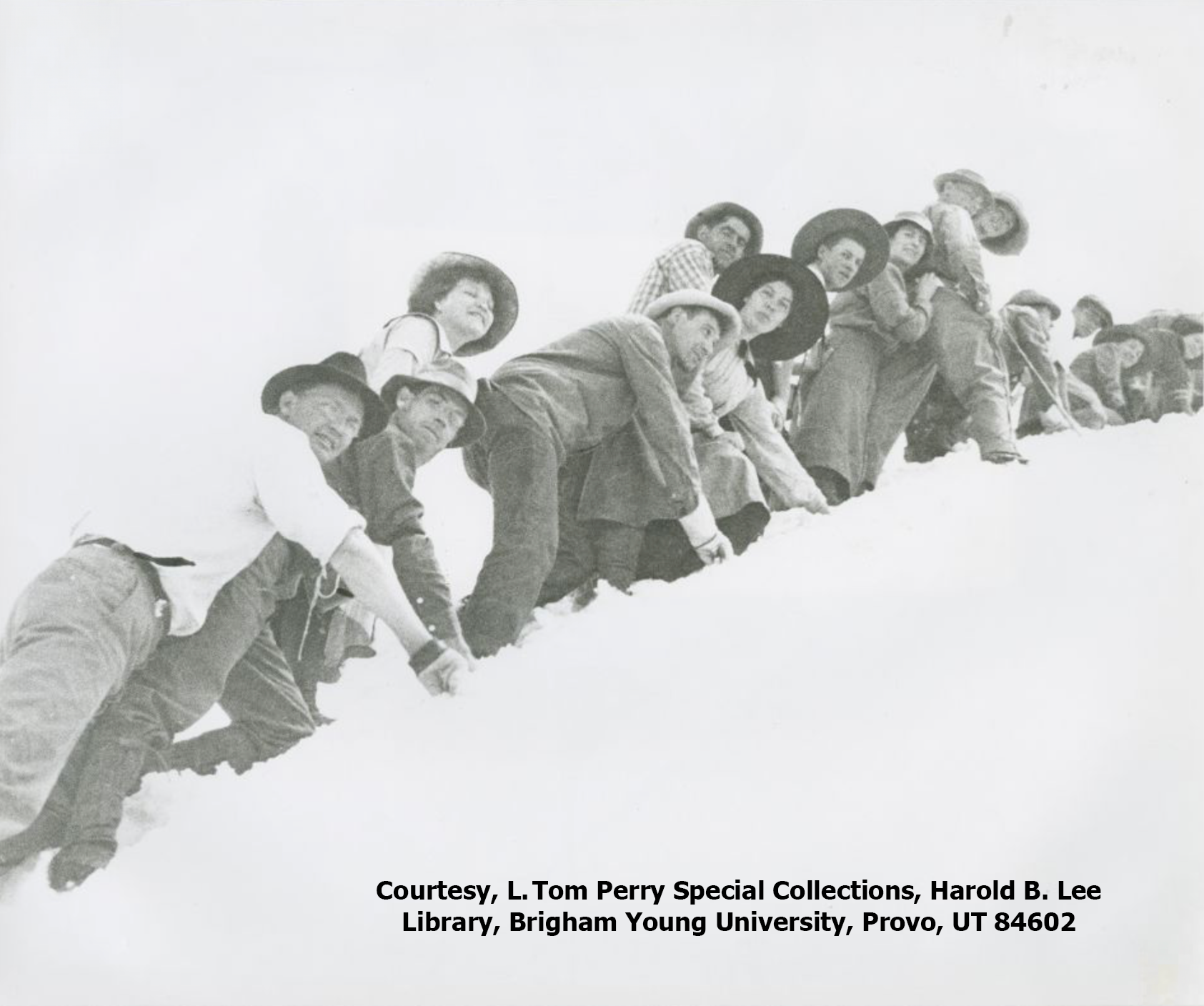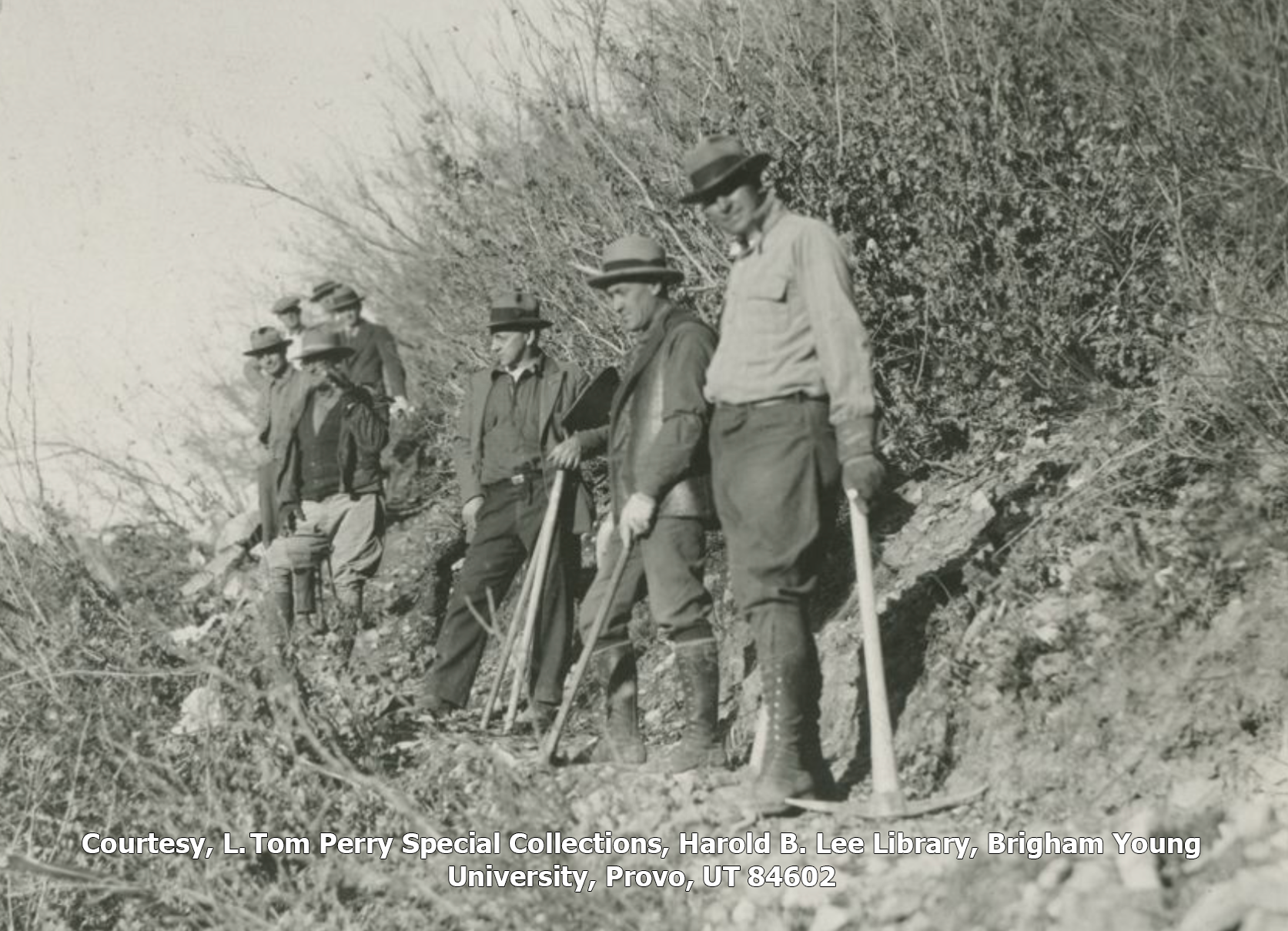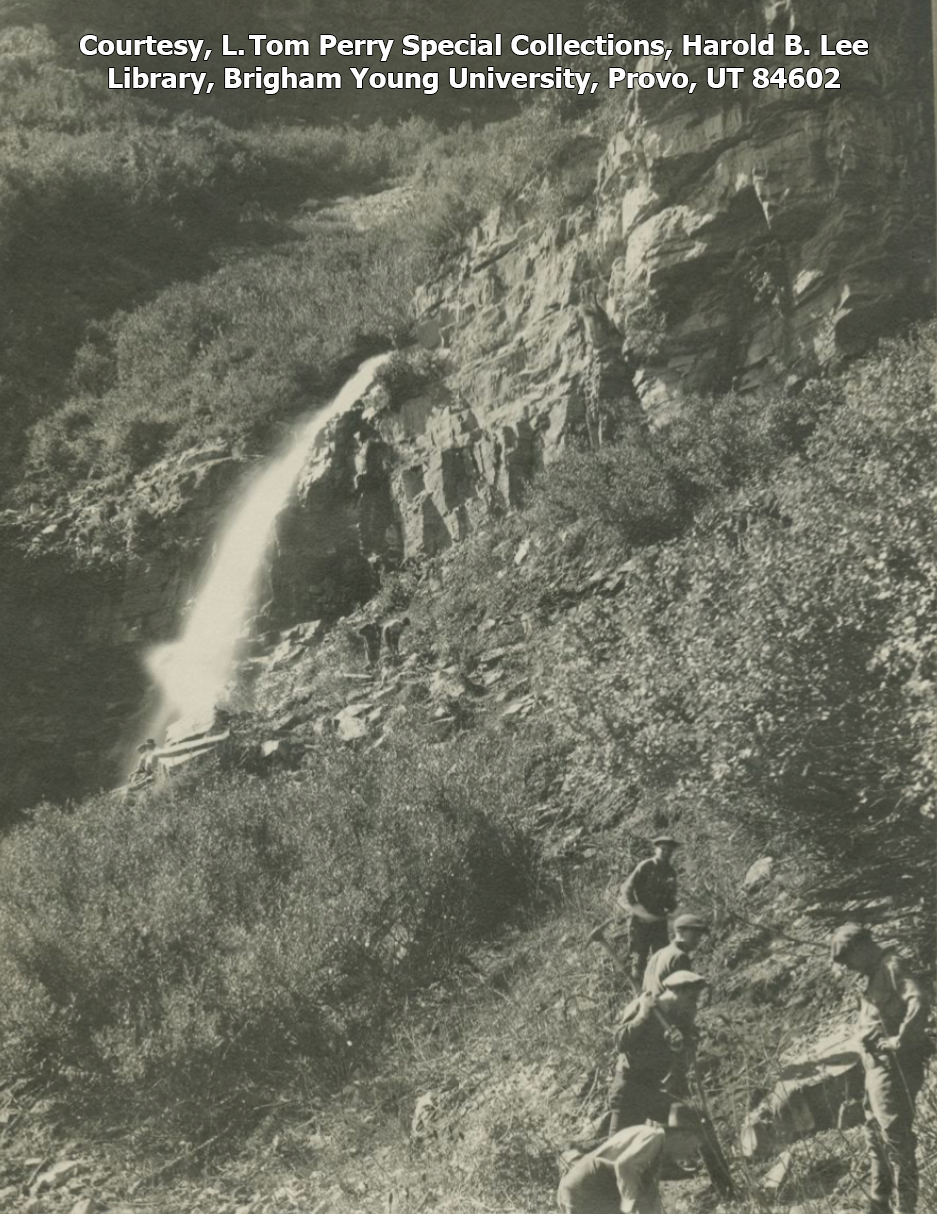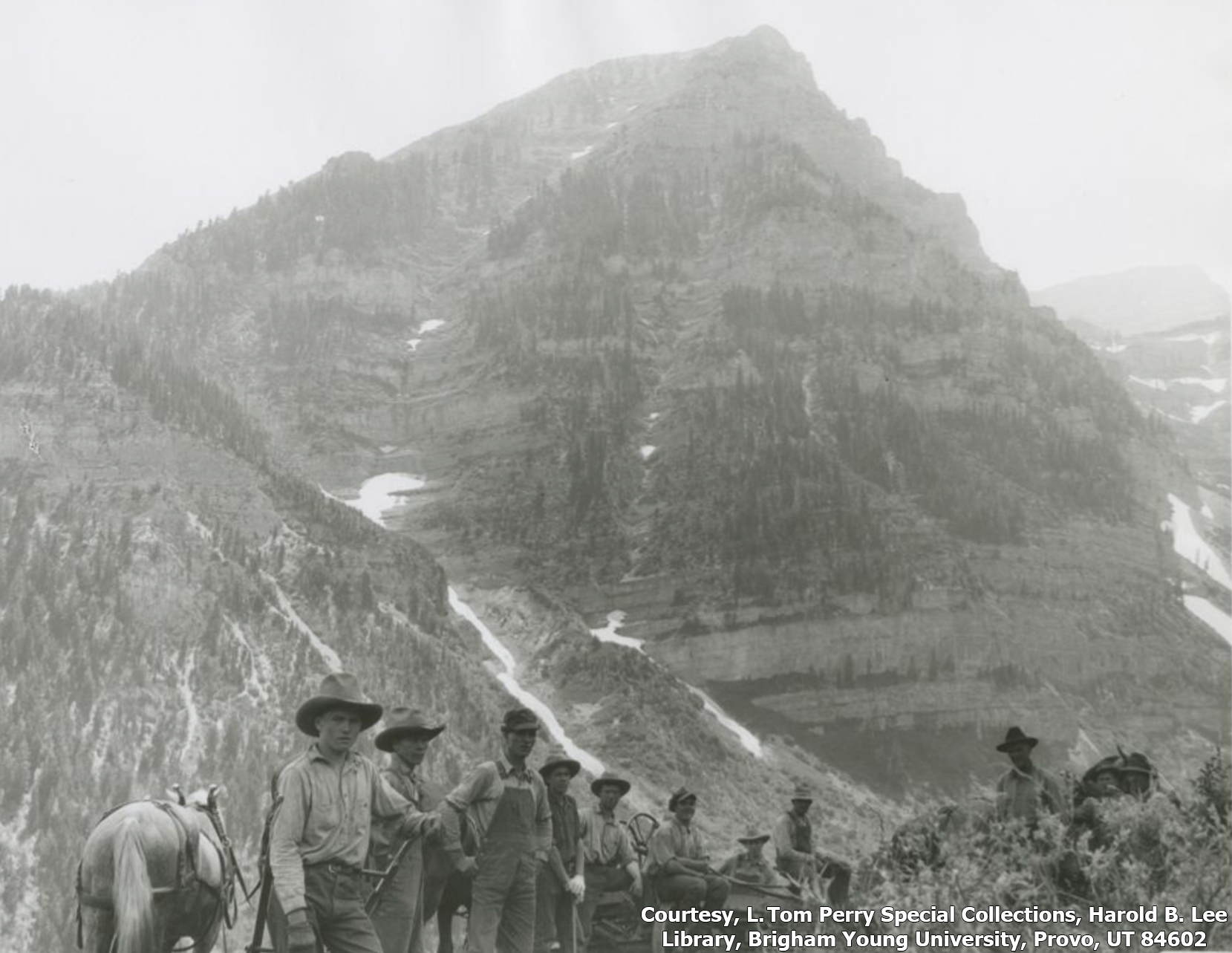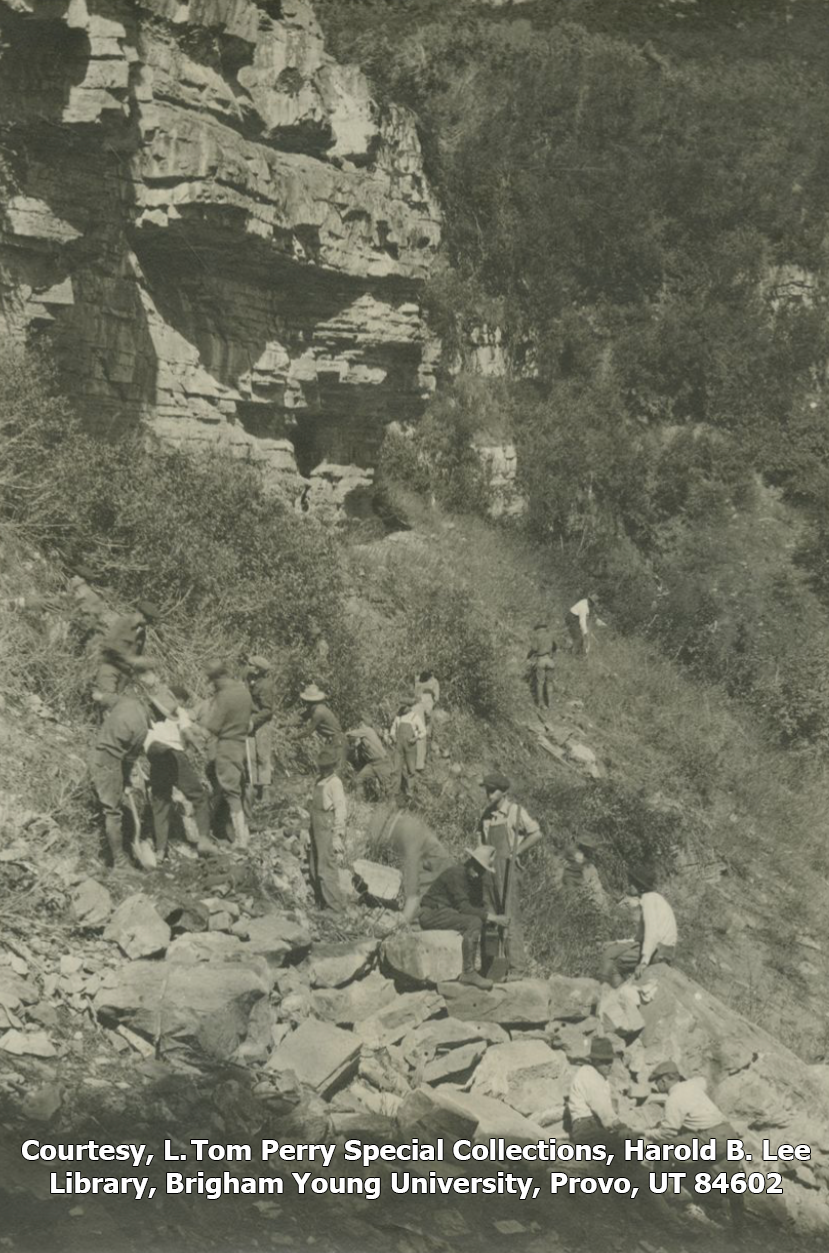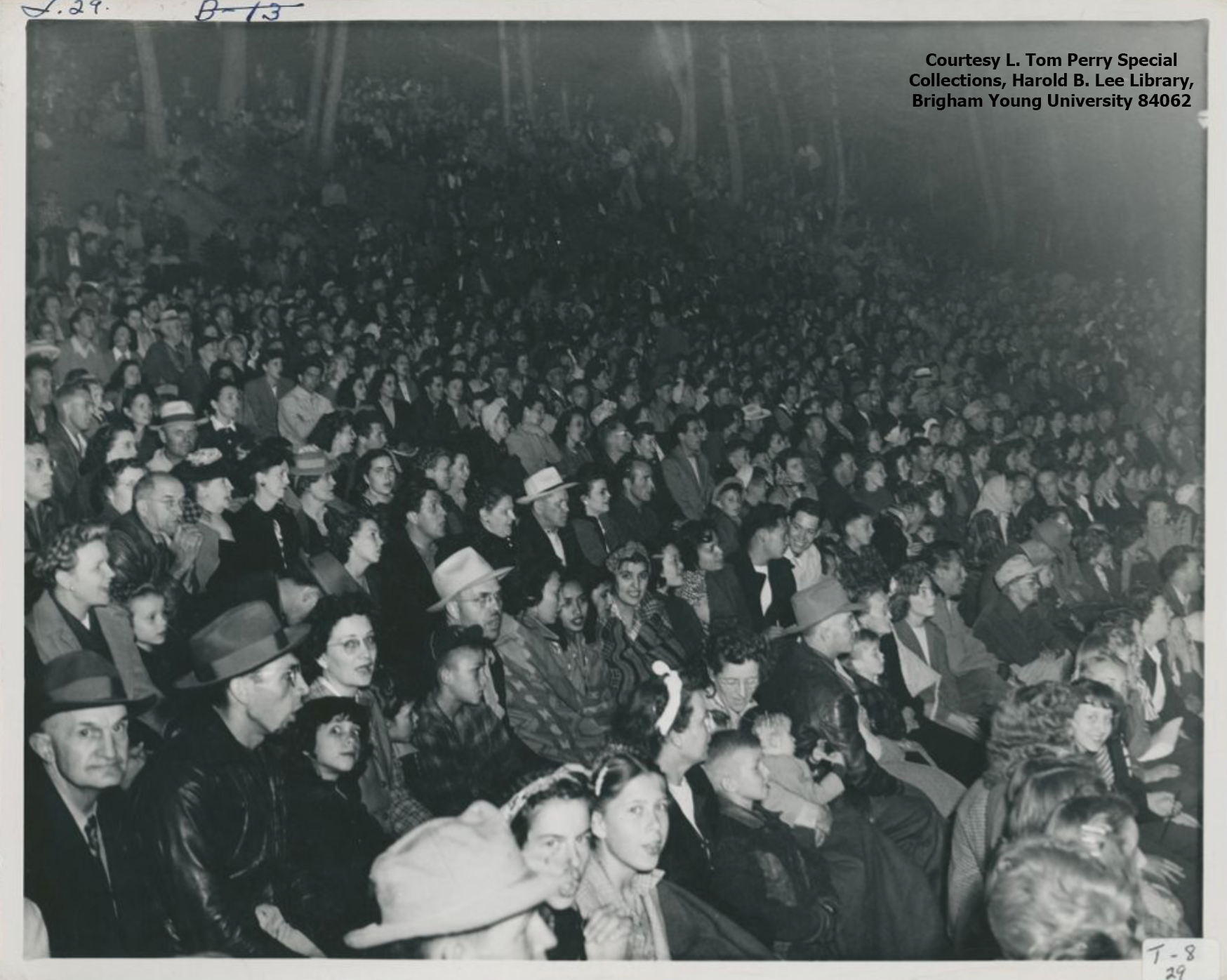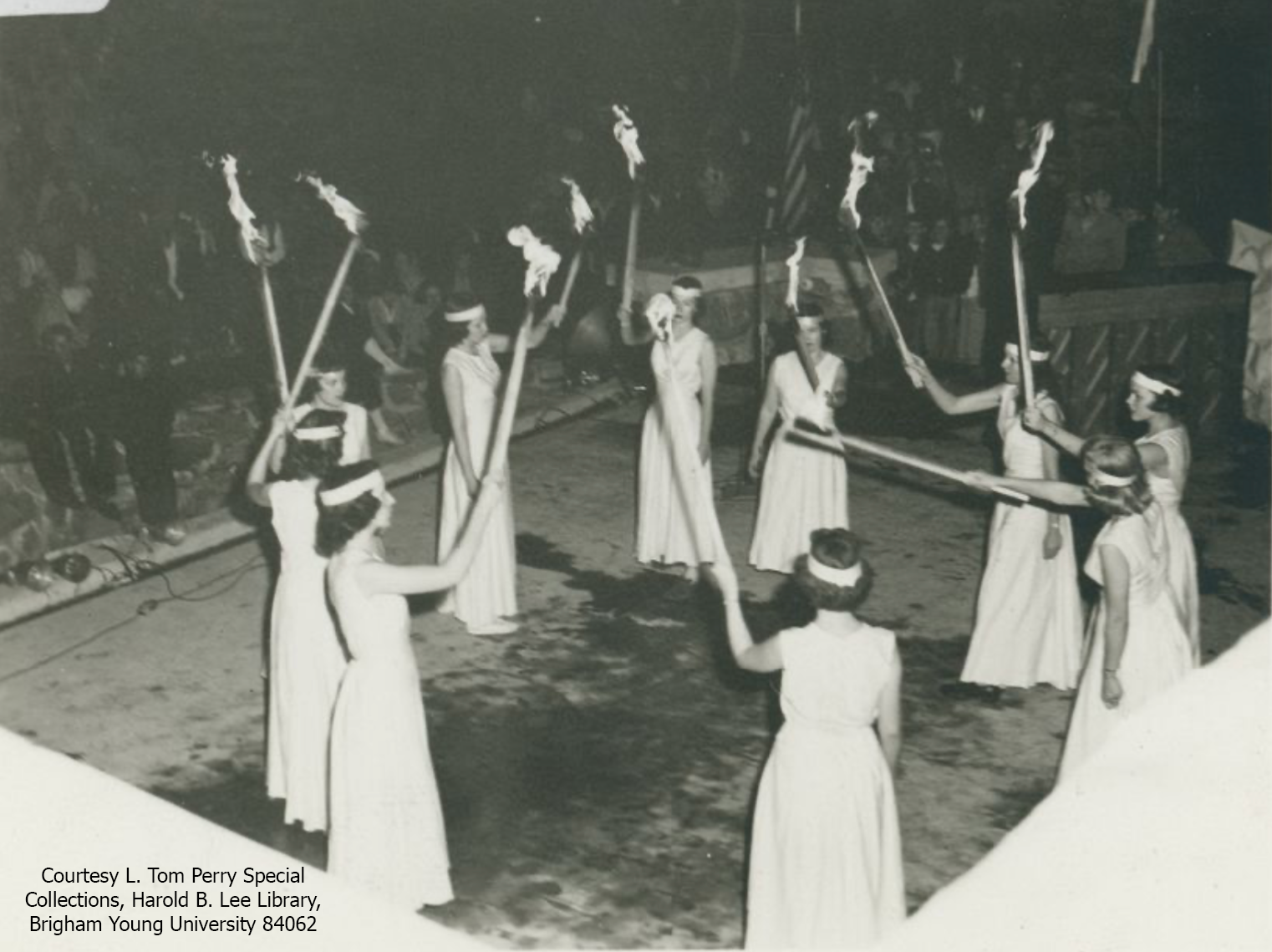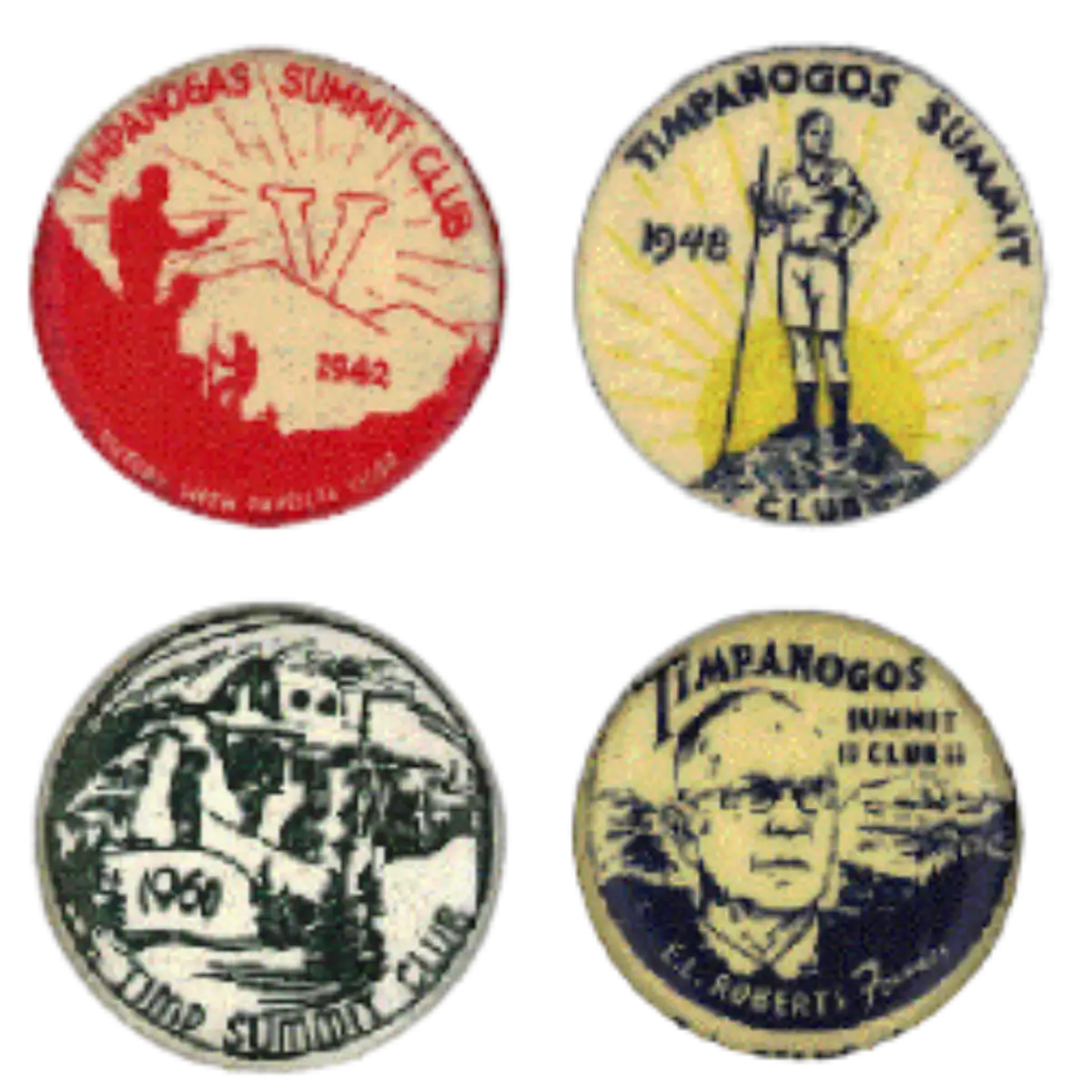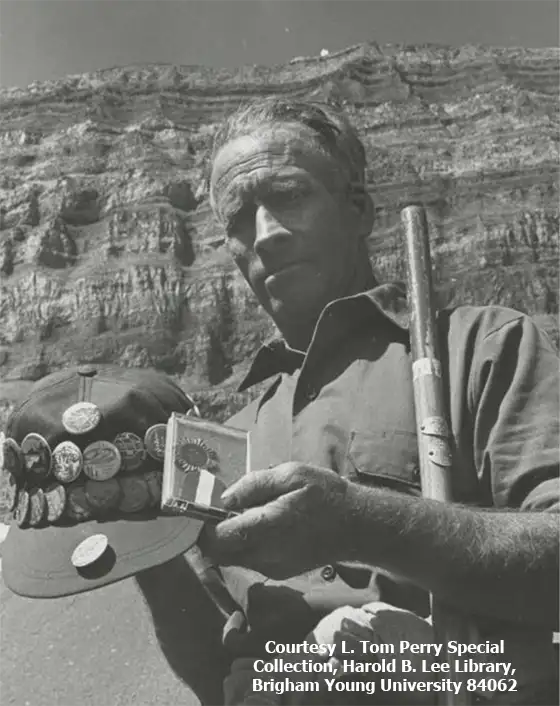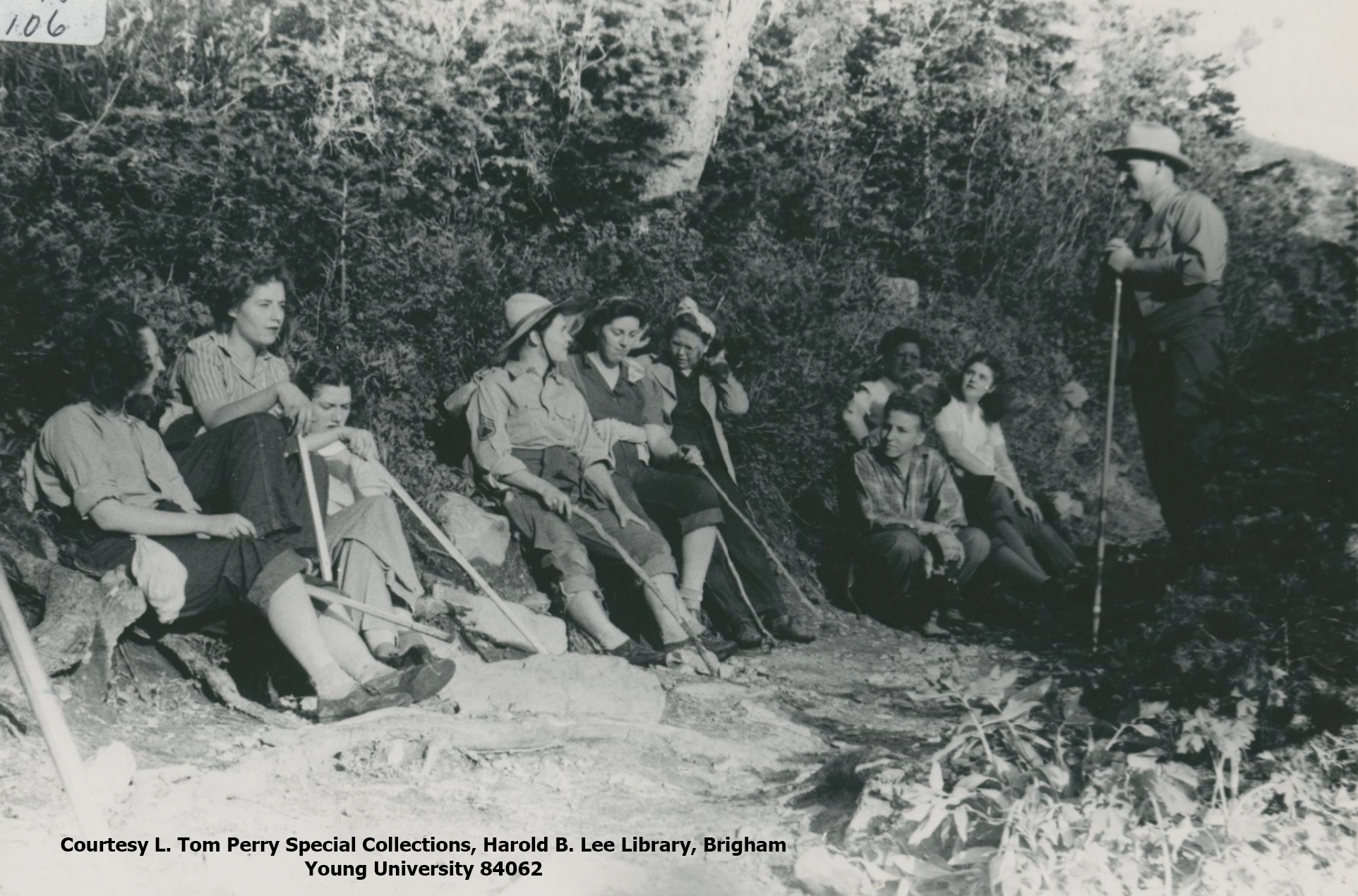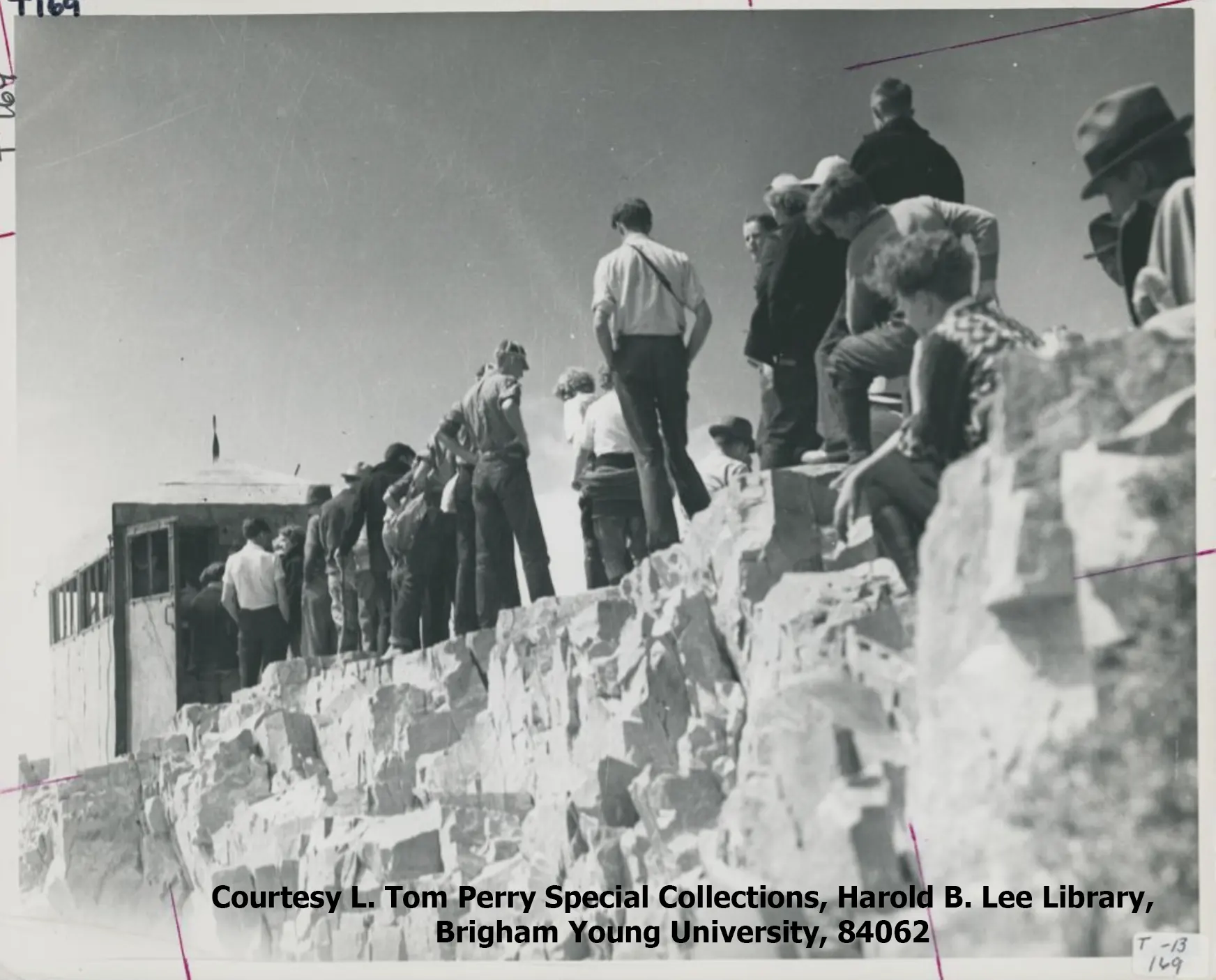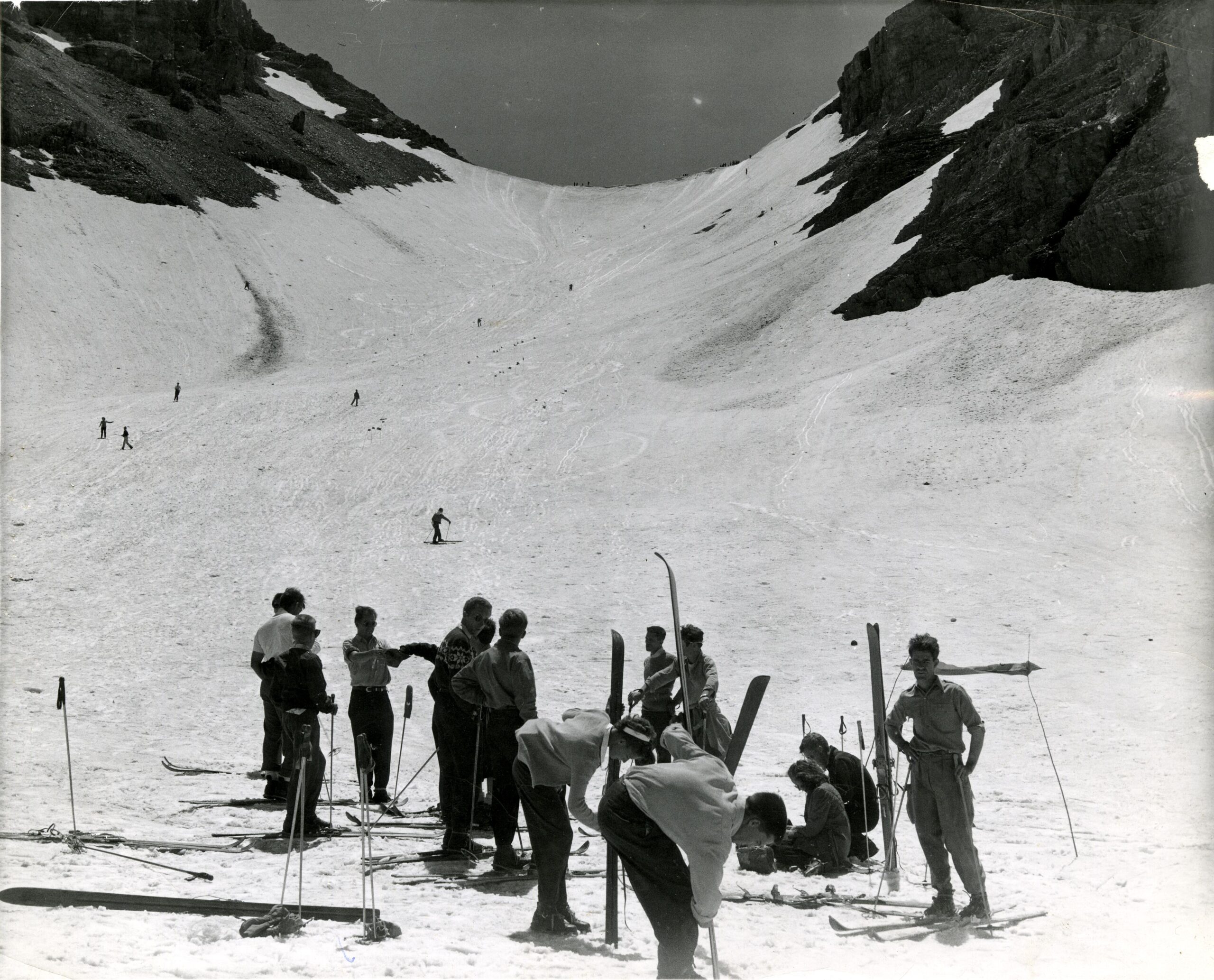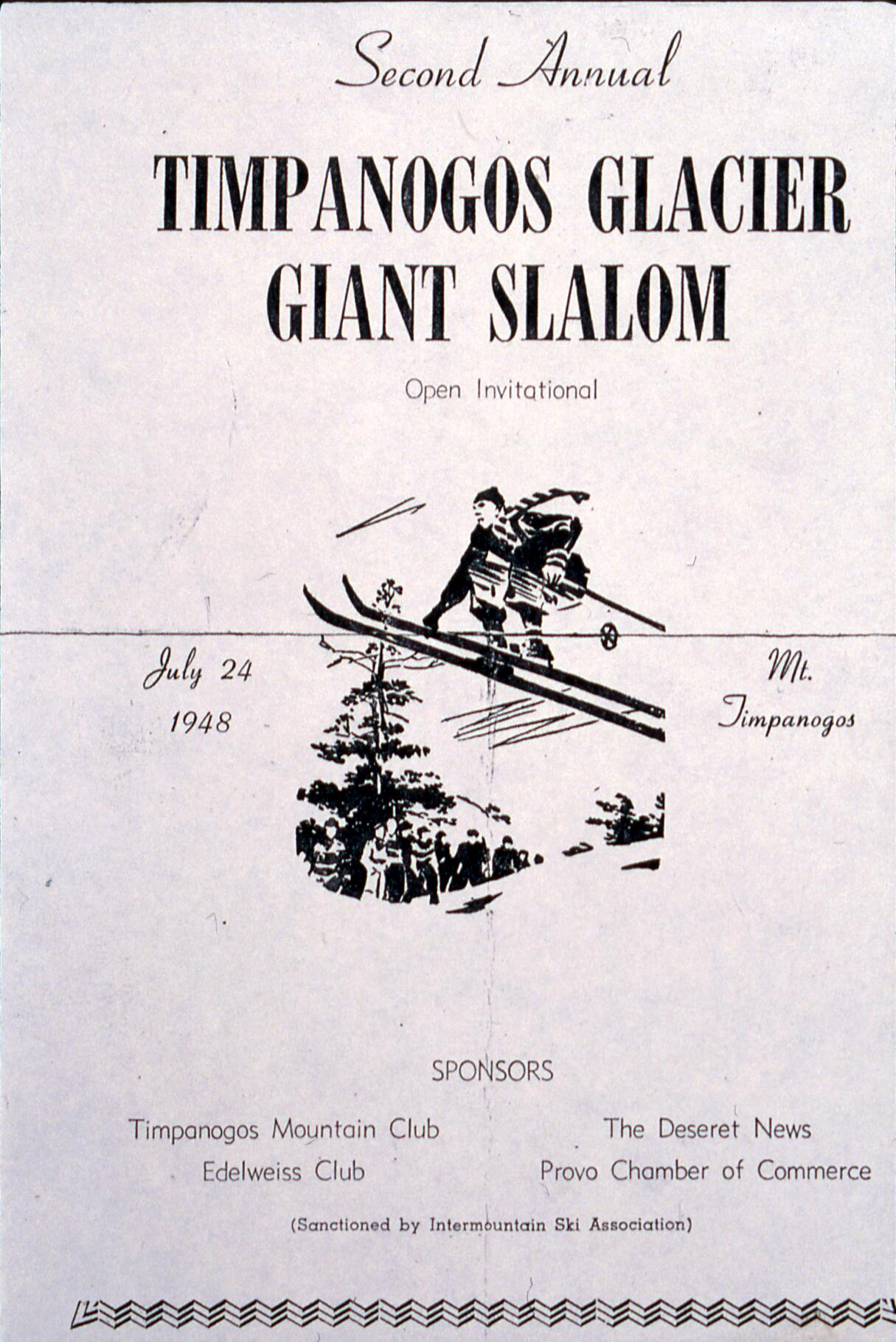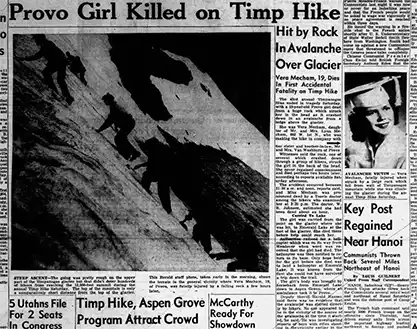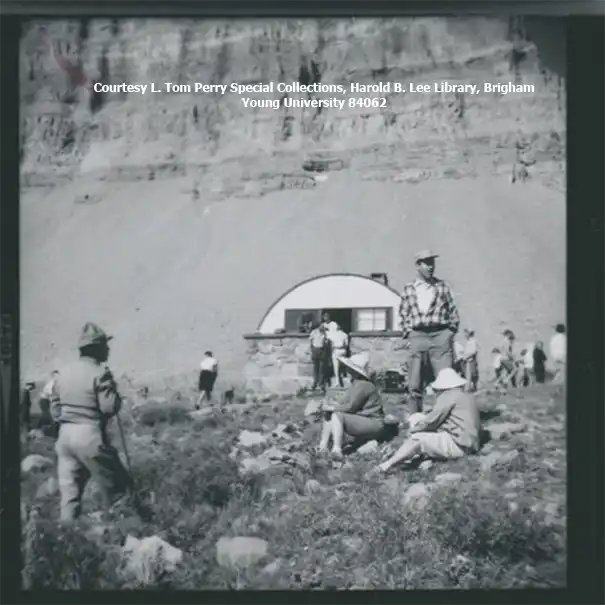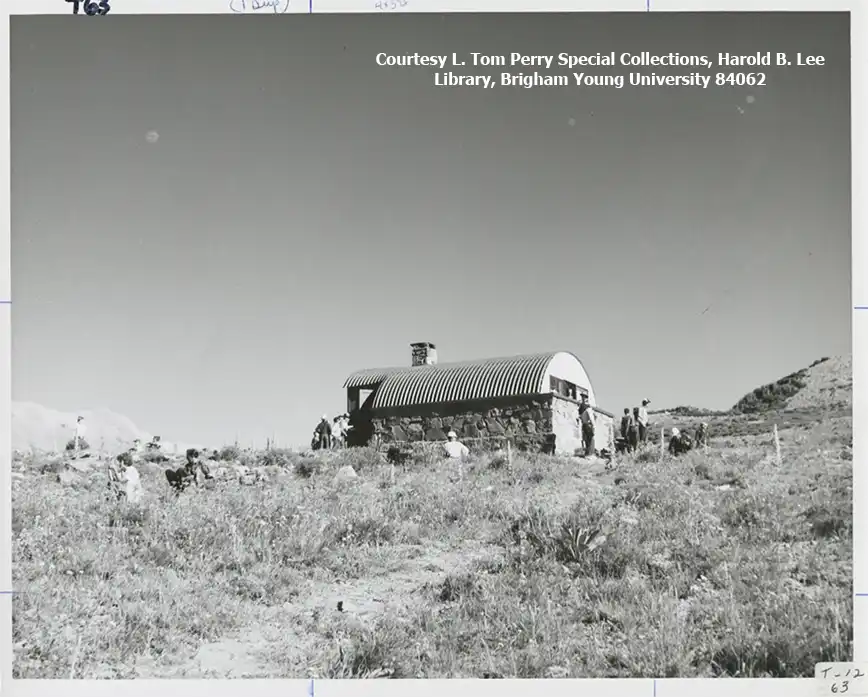A HIKE WITH HISTORY
Summiting Mt. Timpanogos is not only a steep hike - it's a hike steeped in history.
Learn the legacy of the summit hike to enrich your experience as you follow in the historical hikers' footsteps.
View larger versions of the images - click or tap on them to see them on BYU Library's Digital Collections website.
Eugene Roberts
In 1908, Eugene Roberts served an LDS mission in Einsiedeln, Switzerland.
After seeing a group of 5,000 people climb together to a hilltop shrine, he wanted to do something similar when he returned home to Provo, Utah.
Thus emerged the idea of the community hike to the summit of Mt. Timpanogos.
Roberts eventually became known as "Timp" Roberts.
Roberts' Horn, a peak near Mt. Timpanogos' summit, is named in his honor.
1912 The first group summit hike
1925: Hike grows in popularity
In an article announcing the 14th annual hike, the Piute County News noted that 2,500 people attended the pre-hike bonfire in Aspen Grove the previous year. With trails built, the hike continued to draw more people each year.
In the undated photo at left, the Theater in the Pines amphitheater is full for the pre-hike program.
In the undated photo below, young women are shown in the torch lighting ceremony prior to the bonfire that was part of the pre-hike program.
1927: The Glass House built at the summit

Members of the Pleasant Grove's Wasatch Club wanted to place a monument at the Timpanogos summit. After several years of fundraising, then-Governor Dern encouraged the group to involve the Forest Service. The Forest Service supported the idea and construction was started and completed in September of 1927. Horses and burros transported the building materials and one article reported that U.S. Forest Service Ranger Vivian West, who oversaw the construction, had to hastily break camp after completion to avoid being snowed in.
Read September 3, 1927 American Fork Citizen article about construction plans for the Glass House
Read September 23, 1927 Salt Lake Telegram article about completion of the Glass House
Read September 28, 1927 Salt Lake Telegram article about 150 people visiting the Glass House
Read July 20, 2003 Daily Herald article about the history of the Glass House
1936 Silver Jubilee Hike
1948 Glacier Cup
1953 First fatality and calls for increased safety
During the 43rd annual Timp hike, 19-year-old Vera Mecham was killed after being struck by a rock from a rock slide. Two days later, the editors of the Daily Herald encouraged hike organizers to continue the hike, but to increase safety measures. They noted that "the hike has 'gotten out of hand' in some respects, particularly with respect to the dangerous and deplorable practice of 'cutting the trail' by over-zealous participants."
Read the July 18, 1953 Daily Herald article about Vera Mecham's fatal accident
Read the July 20, 1953 Daily Herald article calling for increased safety measures
1960 Emerald Lake Shelter Dedicated
While plans were developed in 1953, and construction started in 1957, the Emerald Lake Shelter was dedicated in 1960. The shelter was designed to provide restrooms and a safe spot for injured hikers or those caught in bad weather. It included restrooms, a fireplace, first aid equipment, and communication gear.
Read June 30, 1953 Daily Herald article about plans for the Emerald Lake Shelter
Read information about the shelter from the Historic Site Form
Read an article & see pictures of the current state of Emerald Lake Shelter
The images below are from the Emerald Lake Shelter Historic Site form - view the full document here.
By the time these were taken, the restrooms were gone and the shelter had fallen into a level of disrepair.
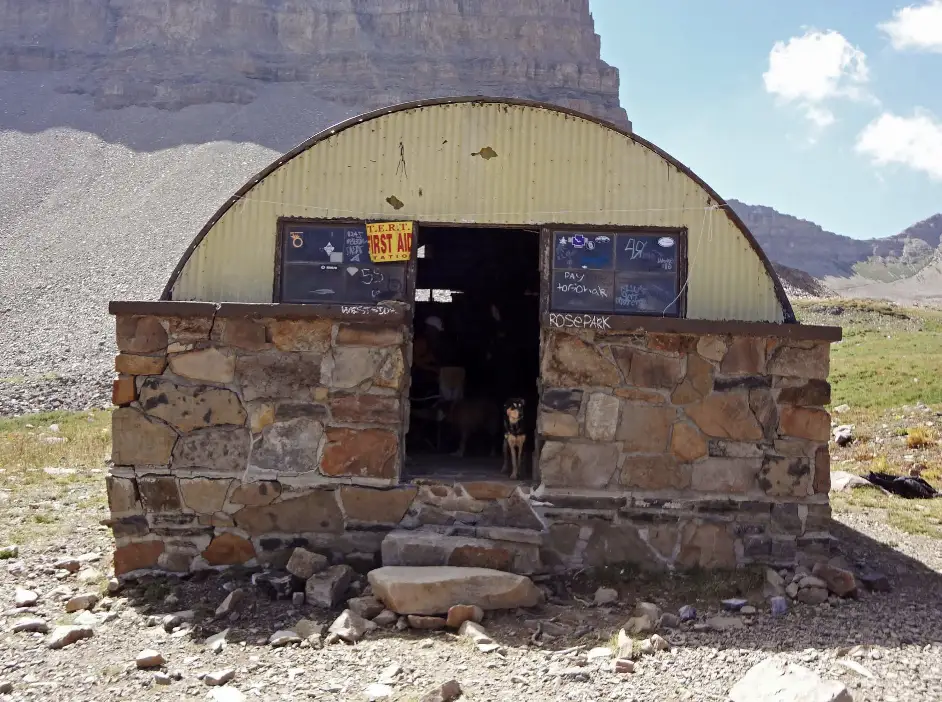
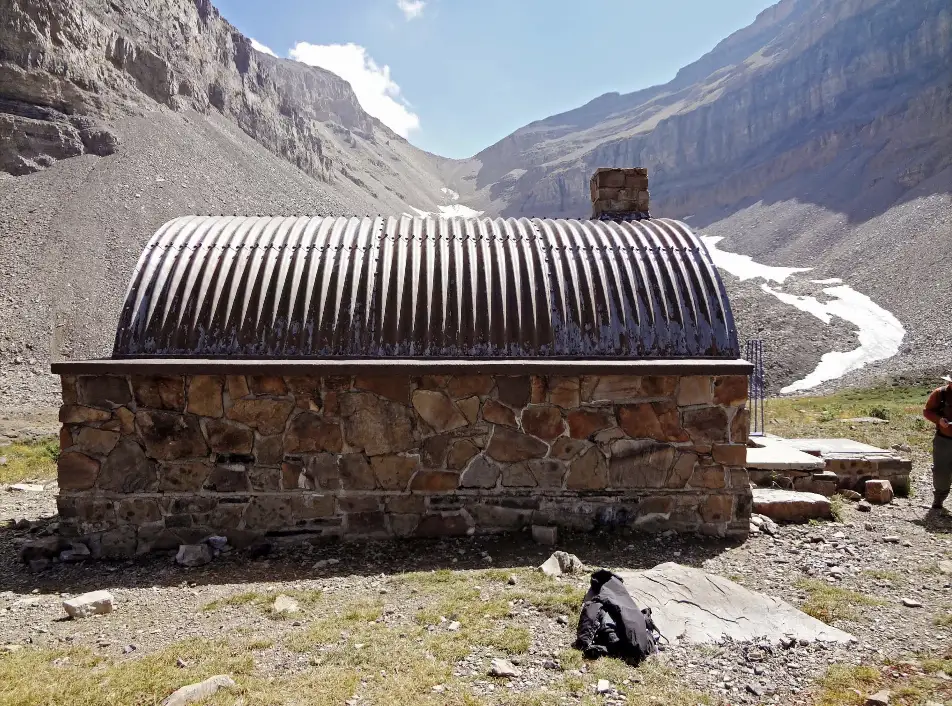
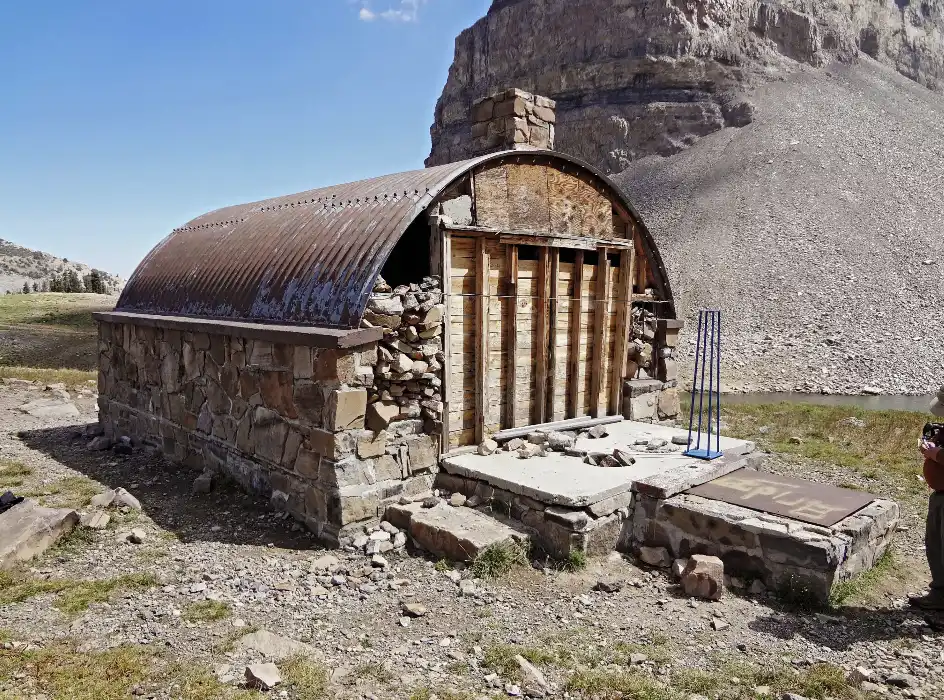
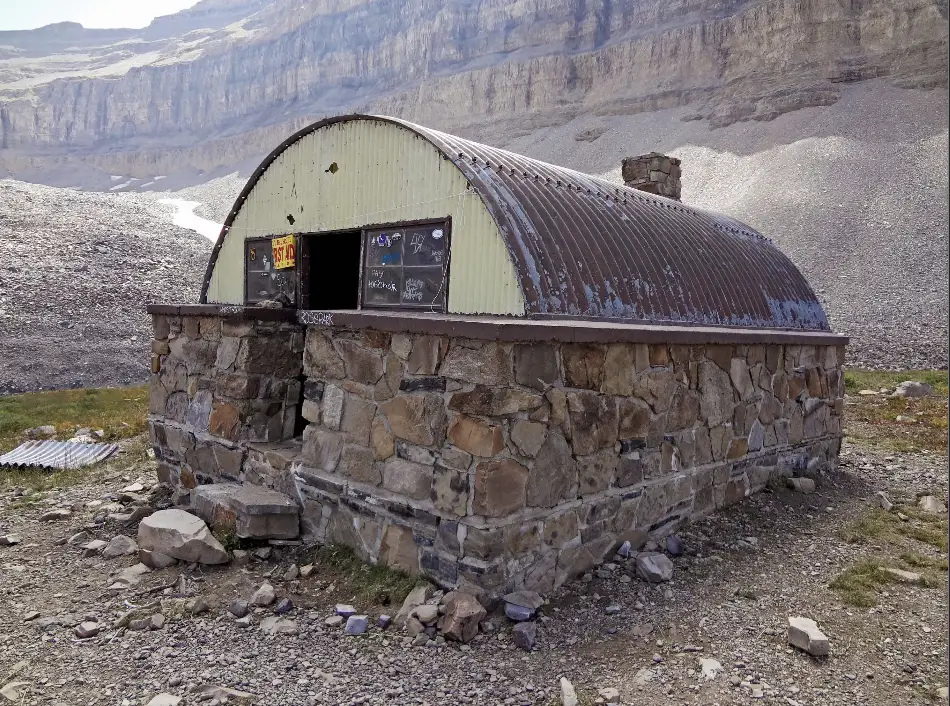
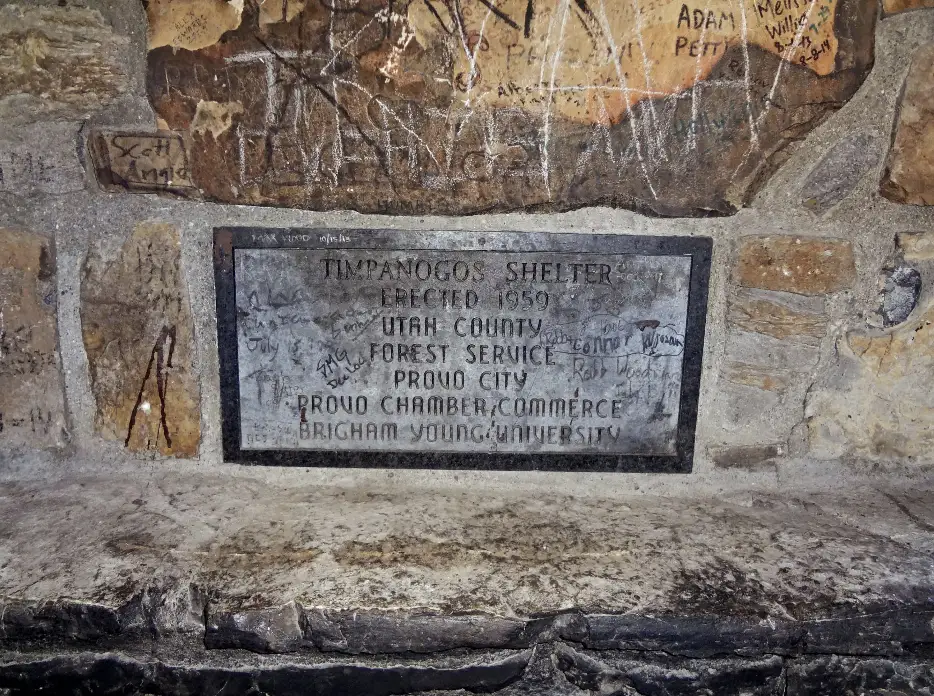
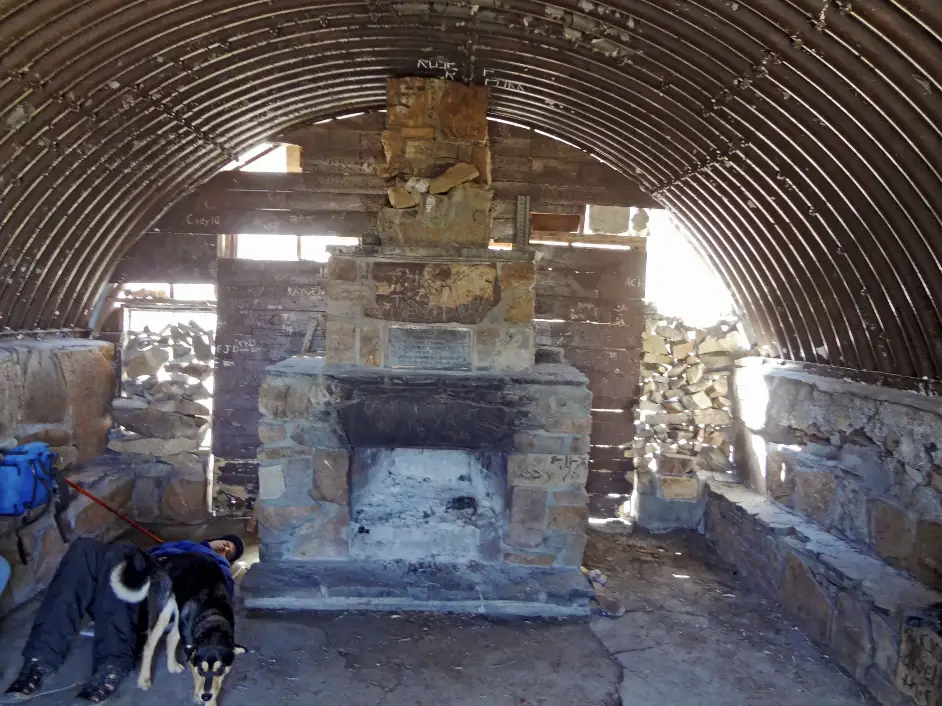
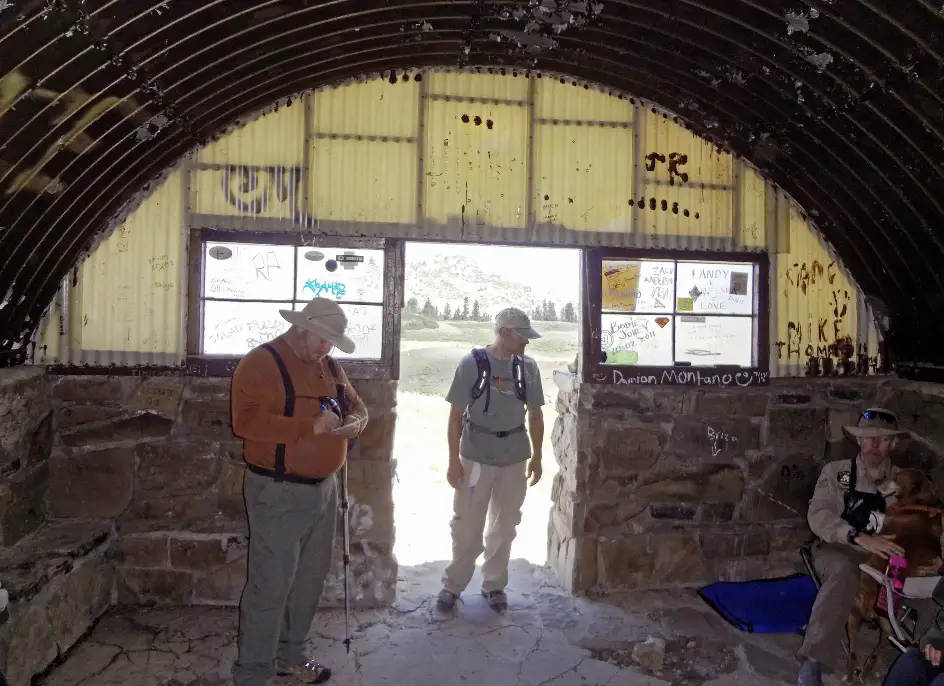

1970 Hike is so popular it is too popular
